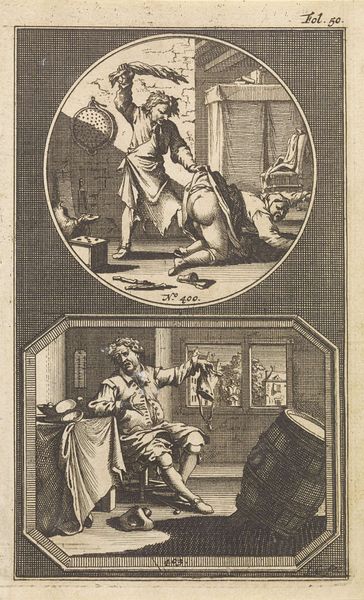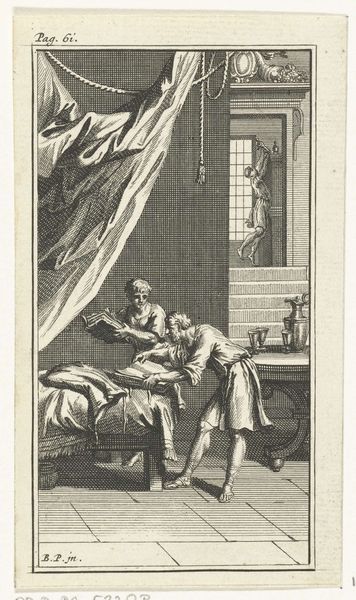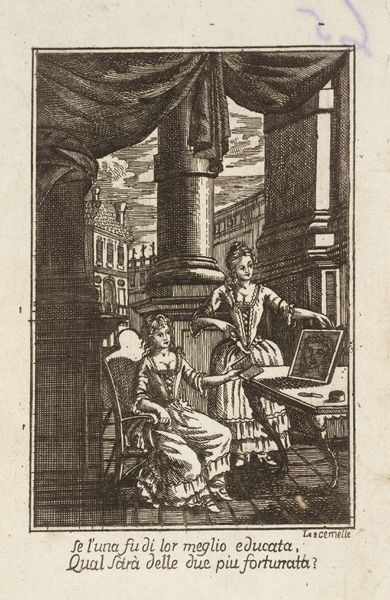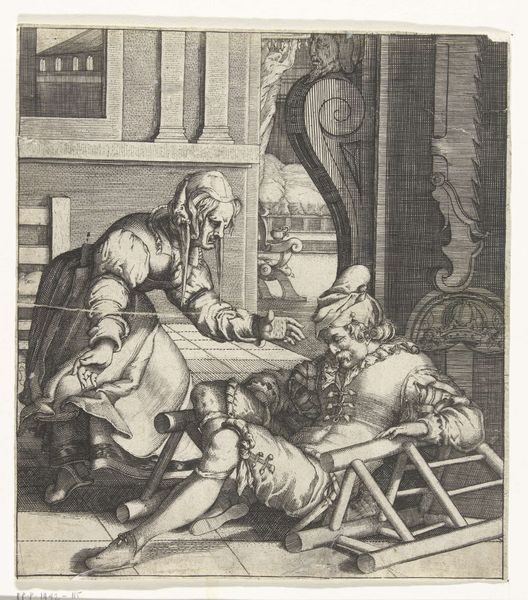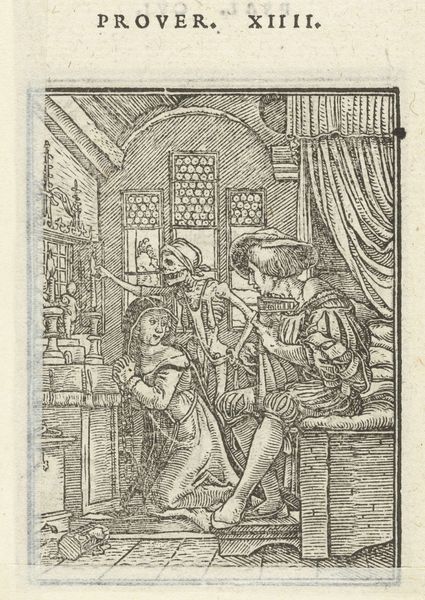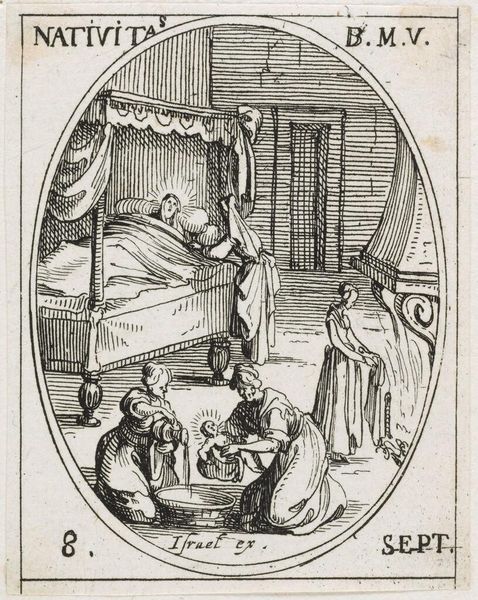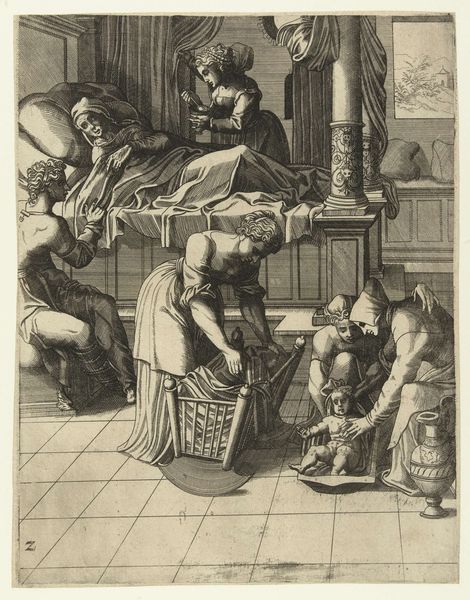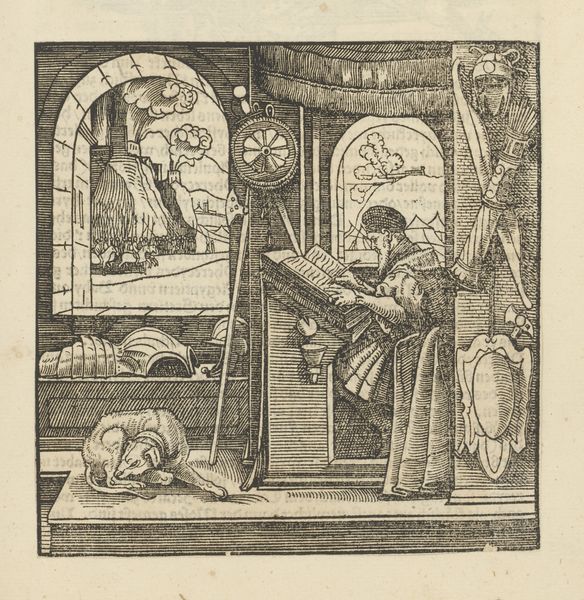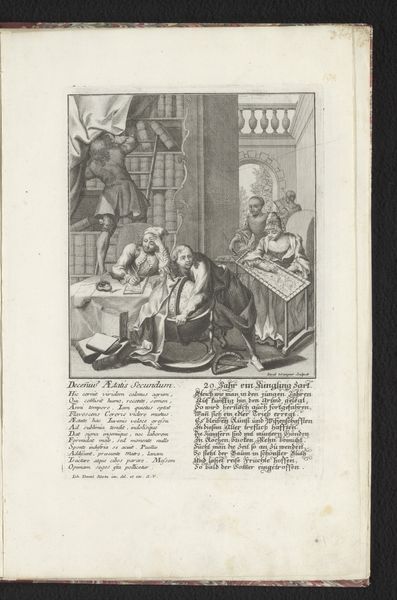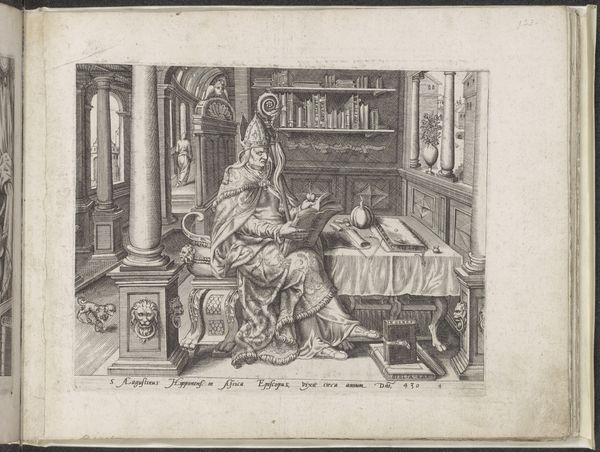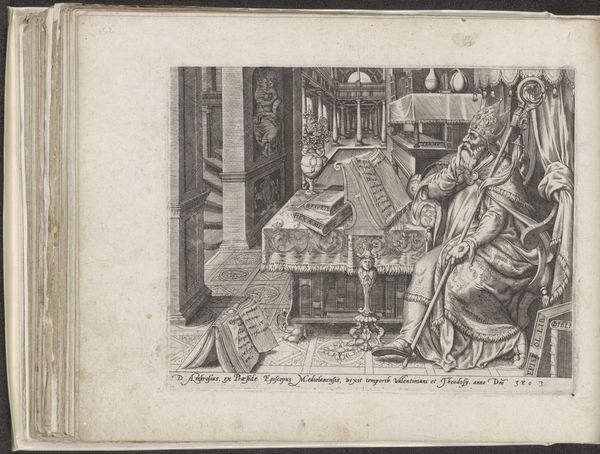
print, engraving
#
narrative-art
#
baroque
# print
#
figuration
#
line
#
genre-painting
#
history-painting
#
engraving
Dimensions: width 82 mm, height 140 mm
Copyright: Rijks Museum: Open Domain
Curator: Today, we're looking at "Bedrogen vader / man uit bed gevallen," which translates to "Deceived father / man fallen out of bed." This print by Jan Goeree dates back to 1705 and is currently held in the Rijksmuseum collection. Editor: The first thing that strikes me is the rather grim humor of it. There's an almost cartoonish quality to the fallen man, sprawled so awkwardly. Curator: Precisely! Consider the socio-economic implications of printmaking at the time. Engravings like this, with their detailed lines and reproducible nature, allowed for a wider dissemination of morality tales. The production method democratized narratives and facilitated a specific visual culture, engaging the middle class. Editor: Yes, and what a narrative it is! The visual language employed is incredibly potent. We see two scenes, each carrying distinct symbolic weight. The upper vignette shows a man with a basin tending to what we assume is an ill child, while a couple embrace passionately in the background. Curator: That basket-like bed—the tangible nature of its construction! Wicker was readily available and cheap, hinting at a lower economic standing for the depicted family, the material existence becoming a vehicle of cultural inscription and values! Editor: And below, the result of his ignorance: a humiliated fall from grace, suggesting the consequence of prioritizing familial duty without seeing the betrayal. The slippers and overturned chamber pot amplify the disruption and shame. Jan Goeree knew very well how to use these visual cues to warn his audience about morality! Curator: And consider the lines Goeree employs, particularly within the bottom scene, their etching suggesting the instability of the man's social standing! It really asks the question of production, reproduction, viewership and moral authority of the Dutch baroque society. Editor: What’s remarkable, however, is how enduring such themes are. Even today, narratives around infidelity and social ridicule find expression across art forms. The imagery maintains its ability to evoke an emotional response and to act as cautionary reminder through its symbolic language. Curator: Well, exploring the processes behind artwork truly helps in its understanding! Thanks to the prints as a product of this production system, art’s social and historical implications have become apparent. Editor: I fully agree! Peeling back the layers of symbolic messaging really enriched the experience for me today. Thanks for shining light on it!
Comments
No comments
Be the first to comment and join the conversation on the ultimate creative platform.
